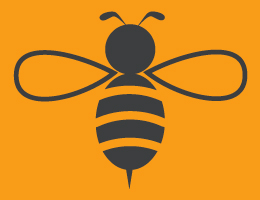
June 22, 2019—Maybe you bent down to smell some flowers. Or you were walking barefoot through the grass. But you felt a sharp sting and knew right away what it was—you'd been stung by a bee.
Your first instinct when a bee stings you is probably to quickly brush it off your skin. Unfortunately, the bee may have left its stinger behind, still pumping venom into your body.
What should you do next? Here's some advice from the American Academy of Dermatology.

How to treat a bee sting
- Don't panic. Calmly walk away from the area to avoid any more attacks. Most bees only sting once, but hornets and wasps can sting repeatedly.
- Remove the stinger. Do this by scraping over it with a fingernail or a piece of gauze. Don't use tweezers—you may release more venom into your skin.
- Wash the area with soap and water.
- Apply a cold pack to help reduce swelling. However, if the swelling migrates to other parts of your body, such as your face or neck, go to a hospital emergency department right away. You might be having an allergic reaction. Other signs of an allergic reaction include trouble breathing, nausea, dizziness or hives.
- Use over-the-counter pain medication such as ibuprofen or acetaminophen to ease pain.
Source: American Academy of Dermatology